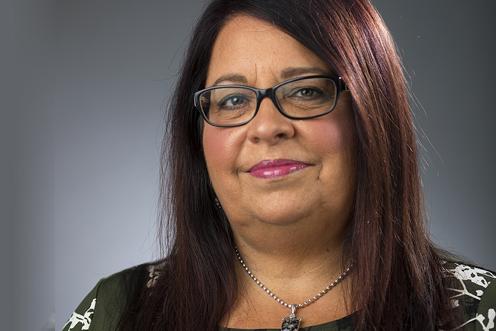The Nurse Will (Not Really) See You Now

Imagine: You are being admitted to the hospital for the first time. The nurse who is asking you questions, assessing your condition and prioritizing your care is just a video image and a voice on a screen.
This scenario must be disconcerting for the patient, who may be fearful, in pain, or unable to focus or communicate well. For the nurse, who is not able to see the patient fully, take vital signs, or use all their senses and observational skills to make a proper assessment, their role in the admission process is more akin to a call center agent than a caring healthcare professional.
This is the scenario happening at NewYork-Presbyterian Cornell campus for both admissions and discharges, and administrators at the Columbia campus, where NYSNA registered nurses work, are proposing it.
At Mount Sinai, administrators gave NYSNA nurses a presentation about remote nursing. They have also raised over $100 million through private philanthropy to develop in-house artificial intelligence (AI) tools for patient care. Doctors are already using some of the AI-generated algorithms and predictive models for patient care.
The hospital industry has been automating nursing and medical decision-making for years, reducing people to a list of symptoms which are then interpreted by technology that can be racially and ethnically biased and often excludes relevant details about an individual patient.²
Sounding the Alarm
In a recent Washington Post article, the assistant director of nursing practice at National Nurses United, Michelle Mahon, sounded the alarm. She said, “If we believe that in our most vulnerable moments … we want somebody who pays attention to us, then we need to be very careful in this moment.”
We know the relational aspect of nursing, the connection between nurse and patient, is integral to patient health and well-being and relies on ongoing, in-person interactions.³
There is very little evidence that remote nursing or AI improves healthcare delivery. Mahon continued to say, “We do experiments in this country, we use the clinical trial, but for some reason, these technologies, they’re being given a pass. They’re being marketed as superior, as ever present, and other types of things that just simply don’t bear out in their utilization.
Technology is getting a pass because it is seen as a pathway to greater profits for healthcare corporations and Wall Street. That’s why the private sector is investing so heavily in the digital health market. Venture funding for digital health companies was a record-breaking $29.1 billion in 2021. Comparatively, $14.9 billion was invested in 2020 and $8.2 billion invested in 2019.4
History Has a Way of Repeating Itself
The use of telehealth and remote nursing has accelerated since the beginning of the COVID-19 pandemic. Clearly, healthcare executives have seen an opportunity in this crisis. Hospital administrators are enthusiastic about cutting human costs — no matter the cost to patients, so we know the use of technology like remote nursing and AI will increasingly intrude on our practice and potentially harm patient care.
Instead of addressing hospital understaffing by hiring, respecting and protecting more nurses, administrators could increasingly look to remote nursing and AI as short-term fixes to the staffing crisis.
The need to defend nurse practice and quality care is constant. When technology like electronic medical records (EMR) was introduced in the 2000s, administrators promised it would save money, save nurses’ time, and streamline patient care and documentation. Instead, EMR systems have been extremely expensive to implement, have increased nurses’ workloads and have had serious glitches that have endangered patients — all while enriching software companies.5
From confusing interfaces that don’t display correct patient information and can increase medical errors to orders not placed because systems don’t connect properly, the reality of EMR in healthcare has not lived up to the hype. Practitioners have added endless, depersonalized clicking to their workloads, taking them away from quality, individualized patient care at the bedside, and contributing to stress and burnout.
Defining Our Future, Not Their Brave New World
As a union of nurses and healthcare professionals, we must continue to monitor and fight back against trends in healthcare that could threaten our practice and damage quality patient care and health equity. New technologies should never be seen as magic bullets to fix our healthcare system and will never be able to replace the quality care of a skilled nurse at the bedside.
With new technologies also come new concerns about the negative impact to our practice and patient care. Clinicians and researchers who have studied the use of AI in healthcare are concerned it could reinforce and accelerate bias, not reduce it.
As researchers said in a 2020 study in Scientific American, “We can no longer move forward blindly, building and deploying tools with whatever data happen to be available, dazzled by a veneer of digital gloss and promises of progress, and then lament the ‘unforeseeable consequences.’ The consequences are foreseeable. But they don’t have to be inevitable.”6
As patient advocates on the frontlines of healthcare, nurses will be here to protect our patients and our practice — whatever the future holds.
Sources:
1. https://www.washingtonpost.com/technology/2023/08/10/ai-chatbots-hospital-technology/
2. https://www.science.org/doi/10.1126/science.aax2342
3. https://www.sciencedirect.com/science/article/abs/pii/S0029646509000462
5. https://kffhealthnews.org/news/death-by-a-thousand-clicks/
6. https://fully-human.org/wp-content/uploads/2021/01/Health-Care-AI-Systems-Are-Biased.pdf